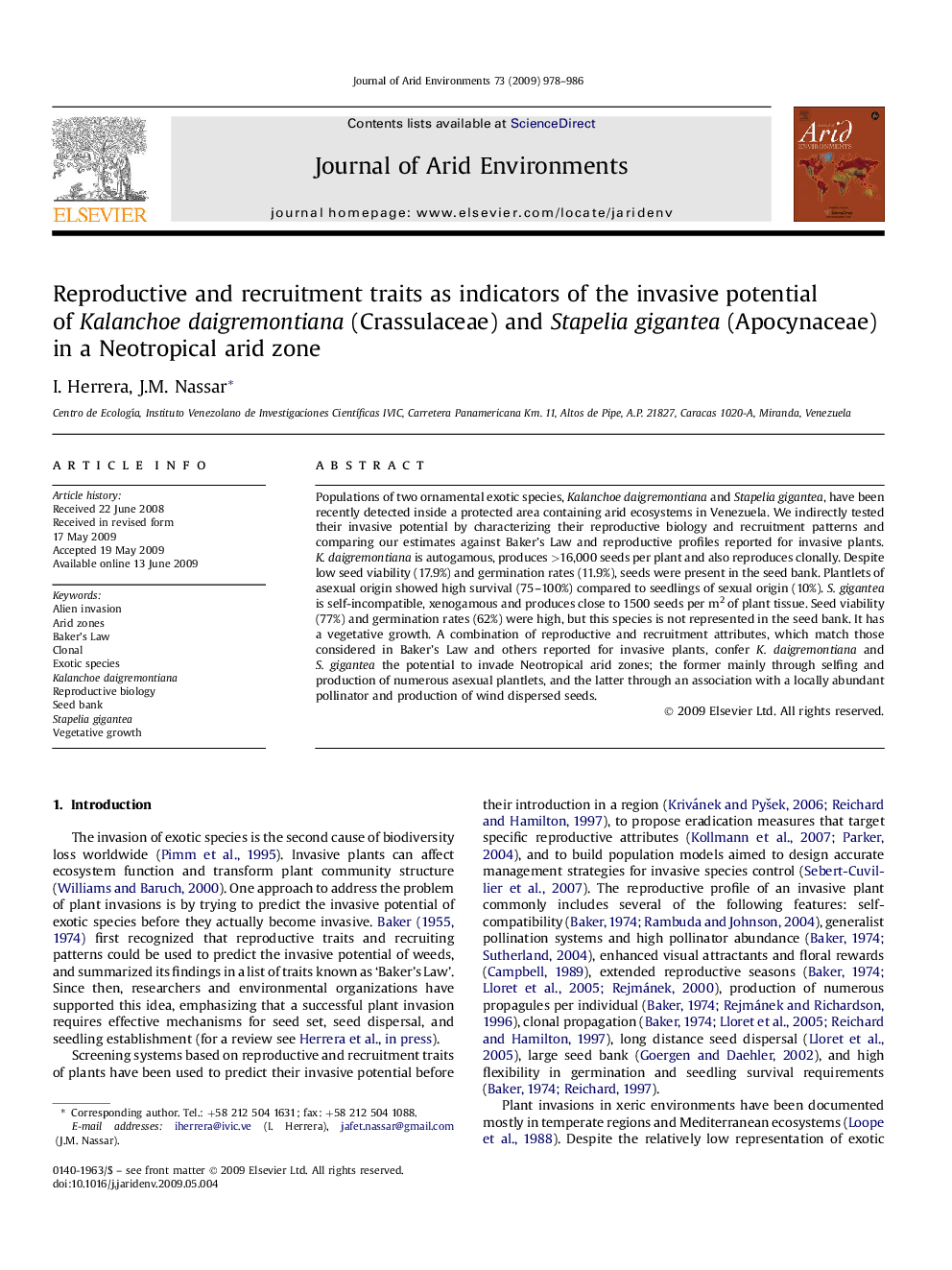| کد مقاله | کد نشریه | سال انتشار | مقاله انگلیسی | نسخه تمام متن |
|---|---|---|---|---|
| 4393725 | 1305500 | 2009 | 9 صفحه PDF | دانلود رایگان |

Populations of two ornamental exotic species, Kalanchoe daigremontiana and Stapelia gigantea, have been recently detected inside a protected area containing arid ecosystems in Venezuela. We indirectly tested their invasive potential by characterizing their reproductive biology and recruitment patterns and comparing our estimates against Baker's Law and reproductive profiles reported for invasive plants. K. daigremontiana is autogamous, produces >16,000 seeds per plant and also reproduces clonally. Despite low seed viability (17.9%) and germination rates (11.9%), seeds were present in the seed bank. Plantlets of asexual origin showed high survival (75–100%) compared to seedlings of sexual origin (10%). S. gigantea is self-incompatible, xenogamous and produces close to 1500 seeds per m2 of plant tissue. Seed viability (77%) and germination rates (62%) were high, but this species is not represented in the seed bank. It has a vegetative growth. A combination of reproductive and recruitment attributes, which match those considered in Baker's Law and others reported for invasive plants, confer K. daigremontiana and S. gigantea the potential to invade Neotropical arid zones; the former mainly through selfing and production of numerous asexual plantlets, and the latter through an association with a locally abundant pollinator and production of wind dispersed seeds.
Journal: Journal of Arid Environments - Volume 73, Issue 11, November 2009, Pages 978–986